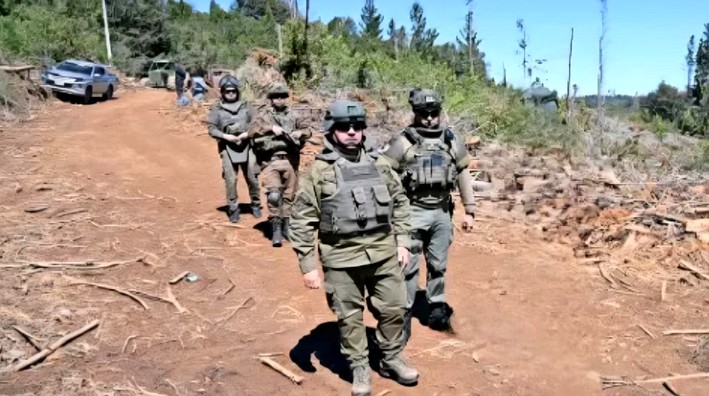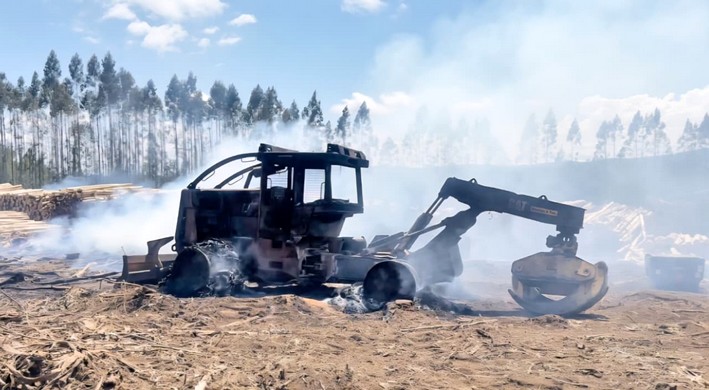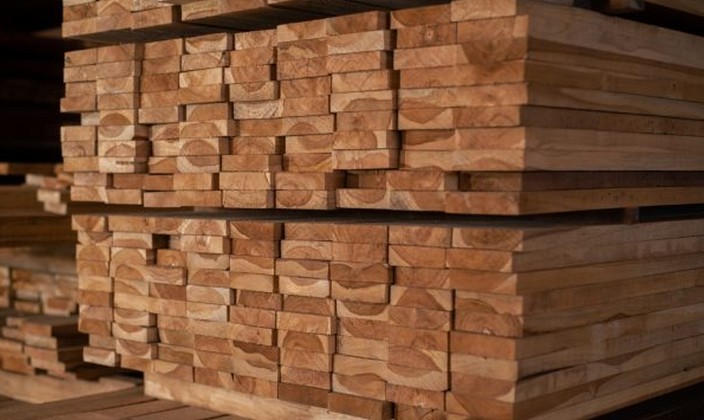The Emerging Quillay Industry Driven by Research and Development
Natural Response S.A. began as a startup from the Pontifical Catholic University of Chile, focused on the industrialization and sale of various extracts from Quillay bark. Today, as Desert King Chile, they export high-value-added industrial products thanks to R&D advancements.
Desert King is a Research and Development (R&D) company that originated in Chile 27 years ago as Natural Response, a startup from the Pontifical Catholic University. It was founded with the knowledge and conviction that Quillay had adjuvant properties for vaccine use and the intention to enter the pharmaceutical market, which they achieved four years ago. In the meantime, the company also developed other products based on Quillay’s foaming properties for clients producing soft drinks and beer, as well as an industrial solution—an acid mist suppressant—for mining, capable of containing sulfuric acid emissions.
As this emerging company advanced its product research and development, one of its clients in California, Desert King International, became interested in the business. They gradually acquired it until all original partners sold their shares, and four years ago, the company became 100% U.S.-owned, adopting the name Desert King Chile.
Andrés González is the General Manager of this company in Chile, who explains the scope of years of Quillay research: "These are products we invented, figuring out how to produce and introduce them slowly into six industries. Pharmaceuticals are our main sales today. Others include agriculture, mining, and cosmetics, where we use Quillay’s emulsifying properties for high-end products. Animal feed is another area with extensive research, where we discovered it enhances immune responses in chickens, pigs, and now salmon. Another key product reduces animal waste odor, as Quillay can mitigate ammonia effects. All these were developed over time in our labs."
What has this ownership change meant?
We have numerous parallel developments, and our R&D pipeline is slightly saturated. We’re opening a new lab in Curauma soon, maintaining our original Quilpué plant lab, and a quality testing lab in Casablanca, where we’ll also build a forestry lab. We’re heavily investing in R&D infrastructure.
Currently, we’re focusing on improving saponin extraction methods to utilize more of the tree and exploring Quillay propagation as a plantation alternative. We’re prioritizing domestication—studying growth conditions and yields—over new applications, though clients in animal and human nutrition are requesting significant developments, which we’re pursuing.
Javier González, Forestry Manager at Desert King Chile, explains their Quillay forestry work for future saponin demand: "Since inception, we aimed to develop plantations. Early FONDEF projects with the Catholic University established native forest management modules in O’Higgins, as Quillay forestry was unexplored. We studied thinning, pruning, and improvement cuts for the irregular sclerophyllous forest."
Annual trials began in ‘98, alongside operational-scale plantations. After 12 years, we defined Quillay growth patterns, enabling us to propose plantations to the forestry market and agroforestry landowners.
How are Quillay plantations being developed?
In 2007, we partnered with CONAF and landowners in central-northern regions (Metropolitan, Valparaíso, O’Higgins), where Quillay is concentrated. Drought post-2009 forced us to shift to rainier areas like Maule and Biobío.
By 2018, we launched a triennial plantation plan, completing 250 hectares last year under long-term leases. We call these "native plantations"—not monocultures, as Quillay interacts with local flora (e.g., maitén, espino, boldo), creating rich ecosystems.
We’re now gathering data to project growth cycles and site-specific models. Moving from trials to operational scale is challenging without land ownership, so we’re seeking to expand our portfolio.,We directly engage landowners interested in Quillay plantations, offering knowledge and technology transfers for saponin and biomass production.
Another focus is domestication. Wild Quillay varies in growth, yield, and saponin content, disrupting industrial processes. For a decade, we’ve sought high-yielding, drought-resistant ecotypes to ensure consistent supply and reduce native forest pressure.
We collaborate with researchers to develop tech packages for future plantations, aiming to secure supply and uplift contractors’ standards. As Quillay plantations gain traction, they’ll create forestry jobs, requiring FSC-compliant practices we’ve implemented.
How has Quillay responded to Chile’s drought?
Plantations in arid zones need support like soil prep, weed control, and occasional irrigation or water-retaining gels. Quillay tolerates low rainfall but thrives with assistance. Plantations can also restore landscapes or provide ecosystem services (e.g., apiculture—Quillay’s mono-floral honey is prized).
Saponin production allows flexible planting (e.g., silvopastoral systems, hedgerows), offering positive externalities like beekeeping.
What’s key in harvesting?
Collaboration with field workers is vital. Native forest harvesting requires compliance with laws and holistic management, while plantations demand contractor upskilling in social, health, and safety standards for sustainable growth.
Quillay plantations can’t match pine/eucalyptus biomass yields, so our economic model emphasizes saponin production and ecosystem benefits (e.g., apiculture, tourism).
Andrés, how do you view climate change’s impact on tree valuation? Is a new forestry policy needed for innovations like yours?
Authorities underestimate central Chile’s drought. The sclerophyllous forest is under brutal stress—it needs pruning, management, and administrative resources, not abandonment.
Public and policymaker awareness must grow. Outdated regulations (e.g., uniform forest definitions) need urgent revision, with state oversight becoming more active and technically modern.
Forests are ecosystems, not just trees. Solutions require collaboration—contractors, forestry firms, R&D, academia, landowners, and government—to address this severe crisis.
Javier González adds: "Authorities lack urgency as forests collapse. Quillay is the future—it’ll open doors for native species and revolutionize forestry."

















